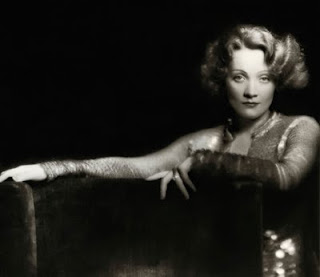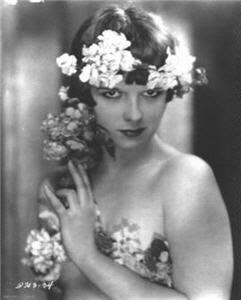This is an odd location to pinpoint as a place of interest, not just because it is an intersection, but because the things that once made it a "happening place" are sadly no longer there. However, its history makes it more than worth mentioning, since at one point in time it was an area of intense energy and notoriety.
If I could give this corner of Hollywood a name, I would call it "Celebrity Haven," but back in the old days, it was simply called "The Corner." On the southeast side of the street sat Schwab's Pharmacy and Googies Diner. Across the street on the southwest, was the grand, the infamous, the scandalous Garden of Allah. This area was like a buffet of movie star "hookups" and sexcapades... or so the story goes.
Let's take these one at a time!
Schwab's Pharmacy: Located at 8024 Sunset Blvd, Schwab's was the go-to place for Hollywood residents looking for medicine, cigarettes, or a light meal. Oh, and stars galore! Its central location made this spot a great meeting place for industry professionals. It was even featured in a scene from Sunset Boulevard when Joe Gillis runs inside to buy Norma Desmond some cigarettes and bumps into his pals. Clearly, it wasn't just any store; stopping in was a way of life.
Inside its doors, customers grabbed a bite while the wheelers and dealers of the business sat chatting up new ingenues or closing deals on the latest pictures. Writers frequently went there as well, scribbling incessantly between sips of coffee. Marilyn Monroe was a frequent customer, F. Scott Fitzgerald had a heart attack there, and Harold Arlen said he got his idea to write the song "Over the Rainbow" while looking at the neon sign. Though it was rumored that it was here that Lana Turner was "discovered" sipping a chocolate milkshake, she was really spotted at the Top Hat malt shop across from Hollywood High drinking a coke. (You'd think that it would be impressive enough for a young girl to find stardom merely by taking a swig of her drink, but the studios, as always, decided to embellish, making her seem more youthful and innocent.)
Good ol' Schwab's closed its doors on October 22, 1983. Five years later, on October 6, 1988 it was destroyed. Laemmle's Sunset 5 Theater stands in its place, along with a Trader Joe's and a Crate and Barrel store.
Googies Cafe: "Googie" is a name that references a type of architecture specific to America, occurring most particularly in the '50s and '60s. The funky, contemporary style was coined after the construction of the Hollywood coffee shop, Googies, which seemed to exemplify perfectly the heretofore unnamed artistic trend of "up-swept roofs, large concrete domes, exposed steel beams and starburst, amoebae or boomerang shapes." Many commented that the restaurant looked almost haphazard, as if it had been thrown together from random scraps. Googies (no apostrophe) sat at 8100 Sunset Blvd. attached to the western wall of Schwab's. It was designed by architect John Lautner in 1949 and became famous for its odd, futuristic sign. For a time, Steven Hayes (real name Ivan) was the night manager of the cafe, where as an aspiring actor he rubbed elbows with many a celebrity. He wrote a two volume book, recording his encounters with, and memories of, those famous faces he knew only as friends.
On an average night, lines ran out the door as hungry youths clamored for a taste of french fries or a glimpse of their favorite stars. James Dean (above) was a constant customer, coming in with his thick glasses, which he was very insecure about. He was always picking gravel out of his hair from his latest car race. Natalie Wood was often in his company, or trying to be, and Errol Flynn popped in from time to time, (Hayes was such a good friend of Errol's that he even stayed with him at his Mulholland Drive home for awhile). Another famous racer, Steve McQueen, was a customer, as was James Garner, Marilyn Monroe (who came incognito in black wig and glasses), and Zsa Zsa Gabor, who raised quite a stink one night when she failed to get a table.
Googies watched as the times changed and the stars faded, until finally Googies itself was living in a world absent of its former glamour and prestige. The restaurant was demolished in the '80s, adding itself to a list of landmark restaurant tragedies, such as The Brown Derby.
Garden of Allah: If you stared out the western window of Googies, you could see this establishment across the street. 8080 Sunset Boulevard used to be the location of one sprawling mansion belonging to Alla Nazimova (above), an actress famous for her roles in films like Camille opposite the sultry Rudolph Valentino. After building her home in 1919, the exotic starlet hosted many parties, which became notorious for their hedonistic and downright sinful results. Some of the rumors are certainly exaggerated, but much of the fodder was based upon the fact that Nazimoza herself was a homosexual, so her home became an alleged meeting place for the "lavender set" of Hollywood. The Spanish-style palace became a center for the drunken antics and sexual goings-on of the who's-who of Los Angeles.
The mansion was converted to an apartment village in 1927 as the era of the Silent Film, and Alla's career, came to a dwindling end. Now addressed at 8152 Sunset, an -H was added to the name, against Alla's objections, and 25 villas became available for the creme de la creme. Alla sold the property after the depression left her bankrupt, and she took up residence in one of the flats. At various times, illustrious glitterati such as Greta Garbo, Humphrey Bogart, and the Marx Brothers stayed at the new Garden, and supposedly the former antics continued. John Barrymore used to ride his bicycle between rooms so as not to waste any partying/drinking time with labored walking!
The Garden met its end in 1959. Francis X. Bushman, who was in attendance at the Hotel's opening celebration, was present at its closing. It was truly the end of an era. Today the space houses a standard, bland strip mall. The party is definitely over.
Of course, as time has passed, all of these classic establishments have disappeared, replaced by strip malls, McDonald's, and cement. I once heard that Joni Mitchell's "Big Yellow Taxi" was at least partially based upon the destruction of the Garden of Allah: "They paved paradise and put up a parking lot." Since that's exactly what happened to the illustrious den of sin, I don't doubt it. I guess we all have to resign ourselves to the fact that nothing lasts forever... except memories. These three structures represented film at different periods: Allah representing more fully the Silent Era, Schwab's the beginning of the Golden Era, and Googies the rebellious refuge of the wholesome '50s.
So while you can't go to Schwab's today and sip on a milkshake or go to Googies and order a 12am burger, you can still stand on the site where these landmarks once were. If you close your eyes and take yourself back 40, 50, 60 years, you may be able to imagine life as it was then. Listen to the traffic pass and slow it down-- fewer cars, a more relaxed tempo. Feel the distant electricity of the past-- young kids wandering around, hoping to catch a glimpse of Marilyn or Rudy. Breathe in a younger Hollywood, one that was far from innocent, but still deeply naive; one existing in the moment, and daring to live life unbottled, unapologetic, unfiltered. Life straight: no chaser. Bittersweet... and far too short.























